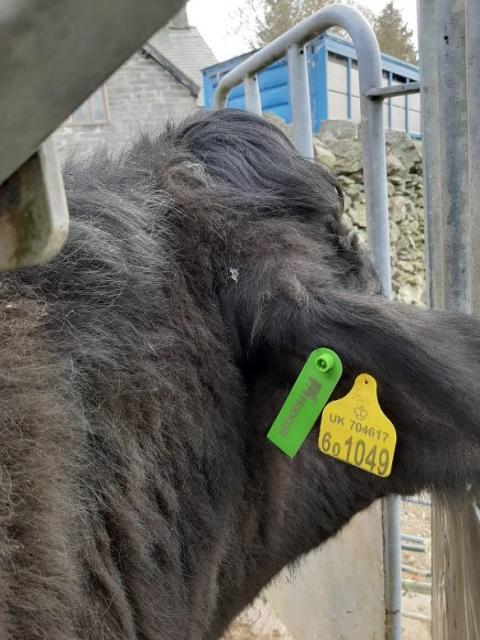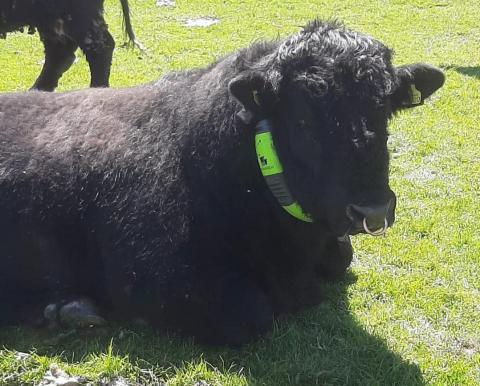Project Update: Rhiwaedog Demonstration Site - Evaluating the benefits of heat detection technology to provide gains in suckler cow fertility
Project aims:
The main aim of the project is to improve fertility and tighten the calving pattern at the demonstration site to ensure a more efficient and productive beef herd.
The key performance indicators which we aim to achieve as a result of the project at Rhiwaedog are:
- To tighten the calving period within both calving blocks to achieve 90% calving rate for the cows in a 6-week period.
- To reduce calving interval to UK average of ‘one live calf’ per 365-375 days.
- Increase conception rates to >95% of herd in-calf at first pregnancy diagnosis.
Project update:
On 25 April 2020, 13 cows were turned in with a new pedigree Welsh Black bull, Machreth Bleddyn 6th, which was added to the herd in January 2020. All cows were tagged with MooCall HEAT electronic tags and linked up to the Moocall dashboard individually. A MooCall HEAT electronic collar was placed on the bull.
The collar uses information based on proximity, mounting behaviour and activity levels to determine to a high accuracy when cows are in heat. When a cow/heifer is in heat, a message is sent through the app or by text to notify the host farmer. The herd’s progress can be monitored on the dashboard on the MooCall app.
So far, not much activity has been recorded, however, it is still early days. The aim is to monitor the herd carefully, and identify any cows which aren’t cycling as they should. We can then explore this further through a physical examination by the vet. If any health issues which affect fertility are discovered, we can work towards solving them.
Next steps:
- Monitor activity on MooCall HEAT dashboard to ensure cows are cycling properly.
- Scan cows within approximately 6 weeks of start of mating period (week commencing 8 June).
- Identify any cows which haven’t stood first service and perform physical examination and ultrasound scanning if required.
In the long term, we aim to calve at least 90% of cows within 6 weeks, in both calving blocks, and achieve at least 95% conception rates at first pregnancy diagnosis.



